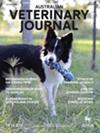Influence of routine follow-up radiographs on recommendations for management of antebrachial fractures in dogs
Abstract
Objective
To evaluate the influence of follow-up radiographic examinations on postoperative recommendations in dogs after surgical stabilisation of antebrachial fractures.
Study design
Retrospective multi-institutional case series.
Animals
Client-owned dogs (n = 208 cases) that underwent surgical stabilisation with internal fixation of antebrachial fractures and returned for scheduled follow-up examinations.
Methods
Medical records from seven referral institutions were reviewed to identify dogs that underwent surgical repair of radius and ulna fractures with internal fixation, followed by planned radiographic follow-up. The frequency of change in clinical recommendations was investigated, and associations between clinical variables, radiographic findings and postoperative recommendations were analysed.
Results
Routine follow-up radiographs were performed at a mean of 6.5 (range: 4–8) weeks postoperatively. A change in postoperative management occurred in 26.9% (56/208) of cases, which was attributed to clinician concerns, owner concern and/or radiographic findings. Radiographic abnormalities that led to a change in management were identified in 18.3% (38/208) of cases. Isolated radiographic abnormalities, defined as radiographic changes without concurrent clinical concerns, were identified in 3.85% (8/208) of cases, resulting in changes to postoperative recommendations. Radiographs alone, or in combination with owner and clinician concerns, had a significant predictive effect on postoperative plan changes (odds ratio [OR] >999.99, 95% confidence interval [CI] 155.18 to >999.99). Dogs that did not have unexpected revisits had significantly lower odds of a postoperative plan change (OR 0.022, 95% CI <0.01 to 0.53). Toy breed status, fracture location, open versus closed fracture type and owner concern were not associated with postoperative plan changes.
Conclusion
Follow-up radiographs without clinician or owner concerns were not significantly lower than a prevalence of 5% (3.85%, 95% CI 1.76 to 7.43, P = 0.45) and significantly influenced the postoperative management. Although isolated radiographic findings were predictive of postoperative plan changes, these changes were not clinically significant unless accompanied by concurrent clinician or owner-reported concerns. The low clinical significance of changes in these cases suggests that a more selective approach to postoperative radiography – guided by clinician examination – may represent a more effective alternative to routine, ‘blanket’ postoperative imaging protocols. Prospective studies are warranted to validate these findings and to optimise postoperative imaging strategies in veterinary orthopaedic surgery.


 求助内容:
求助内容: 应助结果提醒方式:
应助结果提醒方式:


